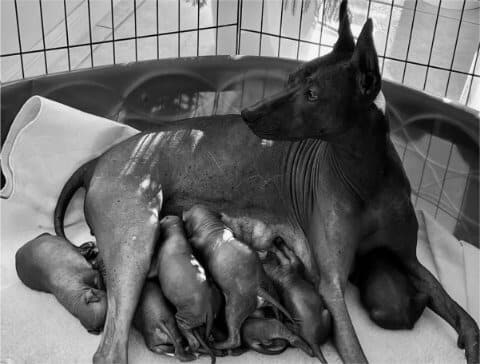
Origins and History of the Xoloitzcuintli
Explore the ancient origins of the Xoloitzcuintli, Mexico’s sacred hairless dog, revered for its loyalty, healing, and mystical powers.
Home » Meet The Breeds » Xoloitzcuintli
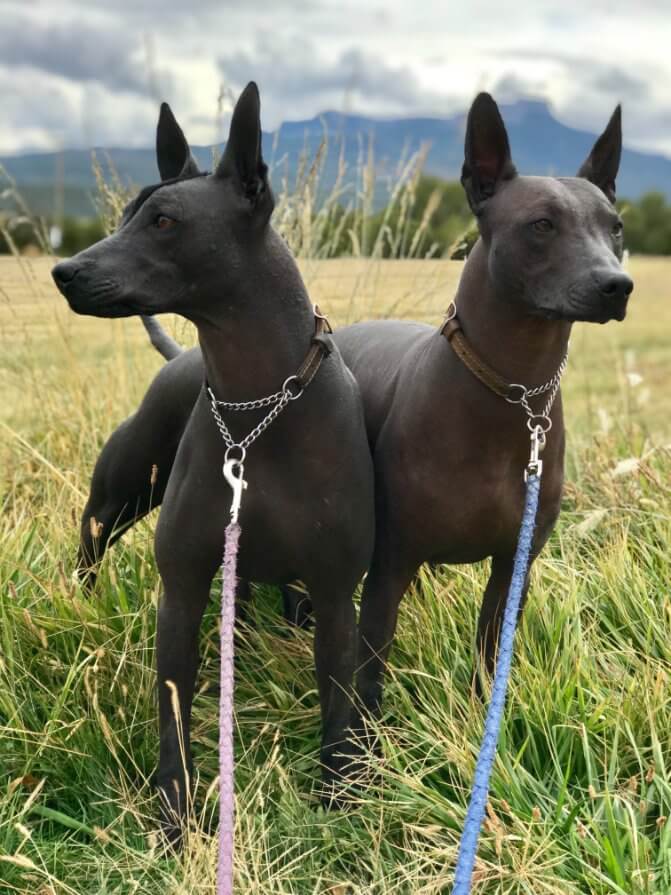
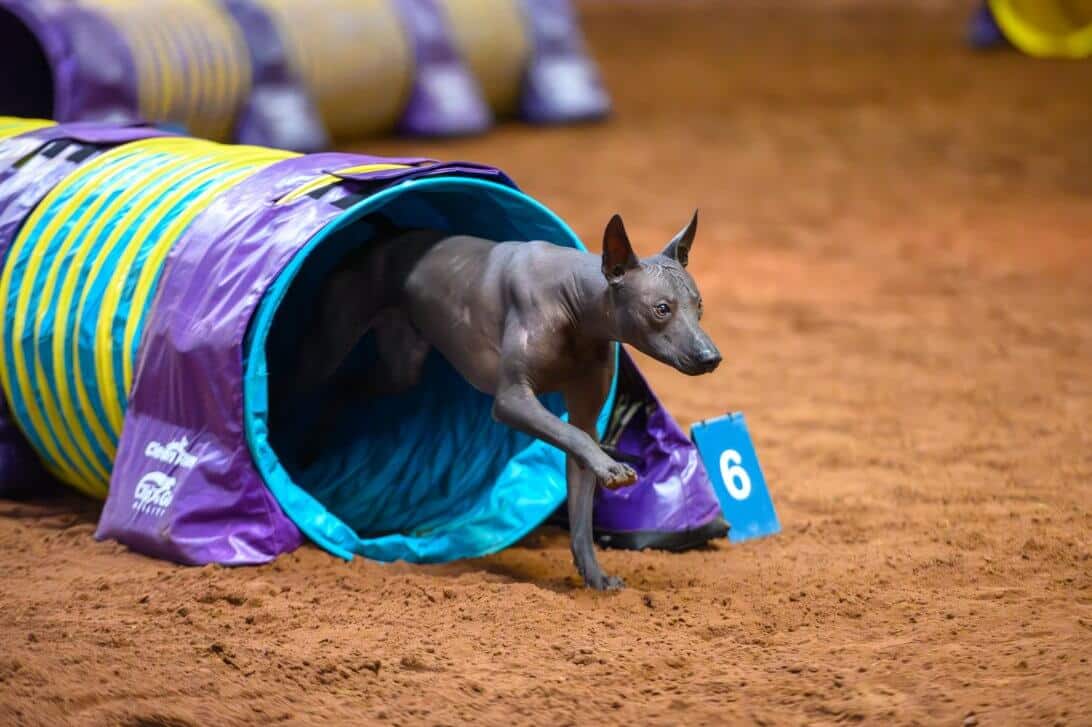
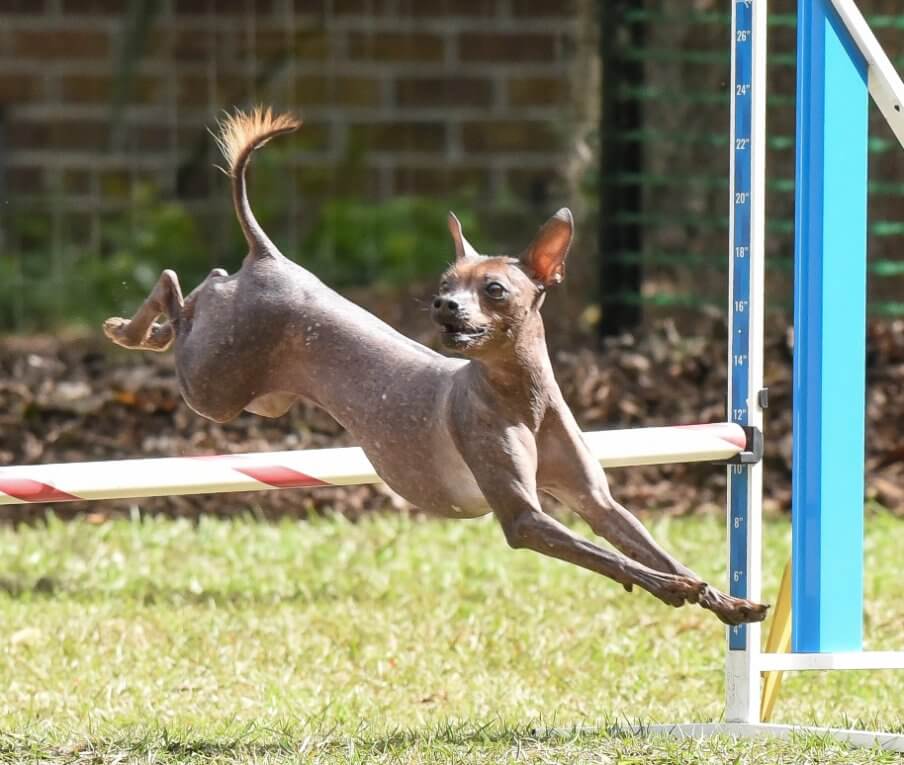
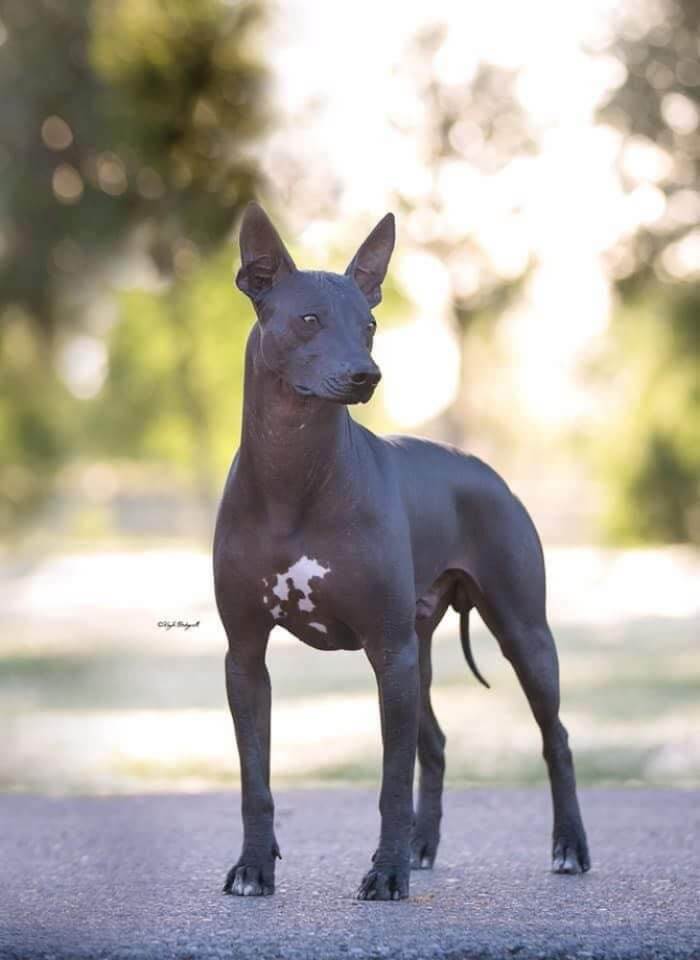
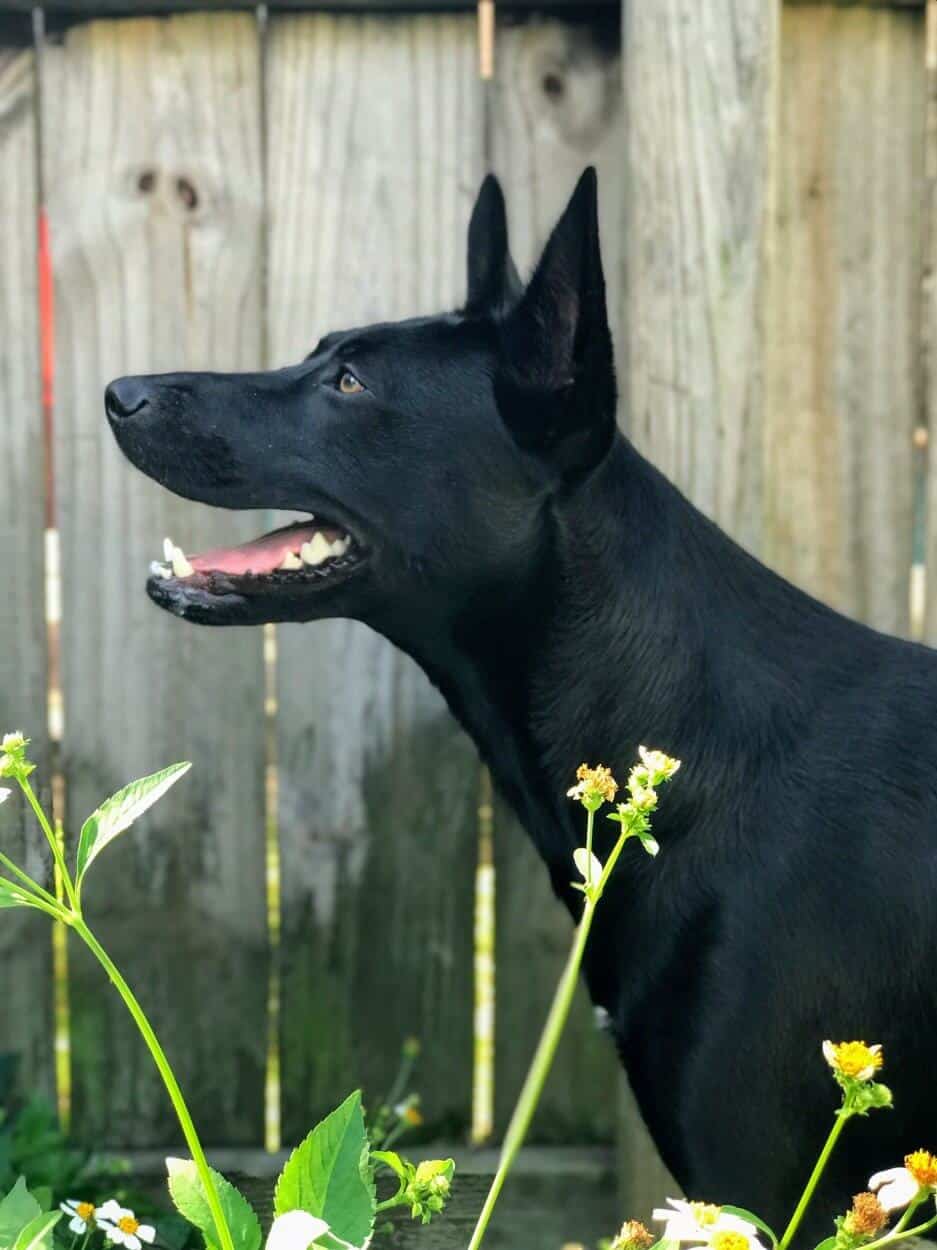
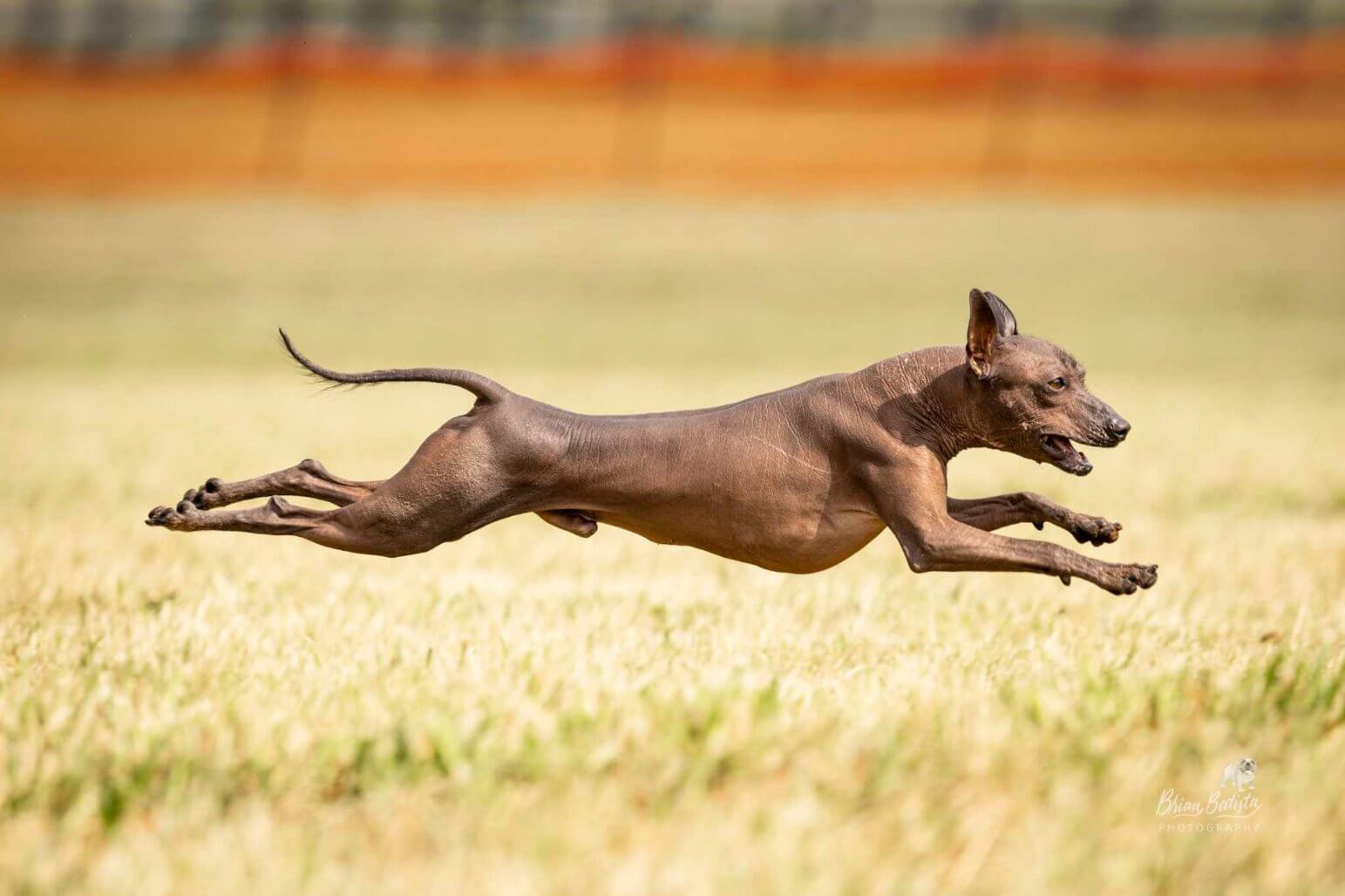
Xoloitzcuintli Club of America
15/03/2025
The Xoloitzcuintli comes in three sizes (Standard, Miniature, and Toy) and two varieties (Hairless and Coated). The Standard is a guardian of the home and family. The Miniature is an ideal size to play with the children, yet small enough to fit comfortably in a family home. The Toy is the perfect size for apartment life and those wanting a lapdog. Xolos may be suitable for people with allergies, but as there are no hypoallergenic dogs this must be considered on a case-by-case basis. The hairless Xolo skin is thick, protective, and resistant to injury. Incomplete dentition is common. The coated variety has a short, sleek, tight-fitting coat and should have full dentition.
Non-Sporting
10 – 23 inches
12 – 70 pounds
13 – 16 years
| Country of Origin | Mexico |
|---|---|
| Bred For | Today, the breed serves as a guard and companion. |
| Known For | The Xoloitzcuintli is now known to be one of the world’s oldest and rarest breeds, with statues identical to the hairless variety dating back over 3,000 years. Many archeological studies indicate the breed is possibly over 4,000 years old. The breed comes in three sizes (Standard, Miniature, and Toy) and two varieties (Hairless and Coated). |
| Popularity | The Xoloitzcuintli had been a rare breed, but their popularity has increased over the years at a steady pace. |
| Temperament | The typical Xolo temperament is calm, tranquil, aloof and attentive. All three sizes exhibit the typical temperament of a working breed. They are often reserved and wary of strangers, but should never be timid or aggressive. They generally bond strongly with their owners, and while friendly, will not be as affectionate with strangers. Xolos are very clean and are often seen grooming themselves like a cat, and are easy to housebreak. |
| Activities | The Xoloitzcuintli is a versatile breed that can take part and succeed in many dog sports such as Agility, Fast CAT, Rally, Obedience, and Conformation, just to name a few. They need moderate exercise and are just as happy to cuddle on the couch. When they are younger, they need more mental stimulation as well as more age-appropriate exercise. |
The name Xoloitzcuintli (show-low-eats-queent-lee) is derived from the name of the Aztec god Xolotl and Itzcuintli, the Aztec word for dog. Archaeological evidence has been found in the tombs of the Colima, Mayan, Toltec, Zapoteca, and Aztec cultures dating the breed to over 3500 years ago. Indigenous peoples revered the Xolo and believed the breed to have mystical healing abilities. Long regarded as guardians and protectors, the indigenous peoples believed that the Xolo would safeguard the home from evil spirits as well as intruders. In ancient times, Xolos were often sacrificed and then buried with their owners to act as guide to the soul on its journey to the underworld.
In 1887, the American Kennel Club studbook included the “Mexican Hairless,” but due to insufficient numbers it was dropped in 1959. Interest was minimal in the late 1940s when first shown in Mexico. Fearing the Xolo would become extinct, the Federación Canófila Mexicana (FCM) launched the “Xolo Expedition of 1954,” led by Norman Pelham Wright bringing back stock to form the foundation of Mexico’s breed revival program. The breed was first registered in Mexico in 1955. A committee headed by Wright authored the first official Breed Standard which was adopted on May 1, 1956. Now the Official Dog of Mexico, an FCI breed, and recognized by the AKC in 2011.
The Xoloitzcuintli is an ancient, natural breed, molded by evolution rather than selective breeding. A Xolo is moderate in all aspects of type and conformation, never extreme or overdone. Today, the breed serves as a guard and companion. The Xolo possesses a clean, graceful outline, equally combining elegance and strength. There are two varieties, Hairless and Coated, identical except for coat and dentition. In the Hairless variety, the principal characteristic is the total or almost total absence of hair. The Coated variety is covered by a short, flat coat. In conformation, all three sizes are lean, sturdy, well-muscled with a spacious ribcage, and with moderate bone. The Xolo outline is rectangular, and the distance from the elbow to the ground is equal to, or slightly greater than, the distance from the withers to the elbow. Typical Xolo temperament is calm, tranquil, aloof, and attentive.
The Xoloitzcuintli comes in three sizes (Standard, Miniature, and Toy).
The Standard variety measures 18-23 inches tall at the shoulder. The miniature measures 14-18 inches tall, and the Toy measures 10-14 inches. Height at the withers is not to be under ten inches or over 24 inches. Dogs less than 10 inches or over 24 inches are disqualified from competition at Conformation dog shows. There is no specified weight range for the Xolo. Since the Xolo comes in three sizes, the weight for the breed can span from 12 to 70 lbs. Size ranges for Males and Females are the same.
The body of the Xoloitzcuintli is slightly longer than the height, in a 9/10 ratio measured from the point of the shoulder to the end of the rump. Medium, oval-shaped bone is desirable. All three sizes exhibit moderately balanced proportions, and appear strong, sturdy, and well-covered with smooth, flat muscle, but never coarse, heavy, or over-muscled.
Texture: The principal characteristic of the hairless variety is the absence of hair; however, a small amount of short, coarse hair is permitted on the top of the head, the feet, and the last third of the tail to the tip. The absence of hair in those areas is not to be penalized. Hair on any other areas is a serious fault. The skin is tough, protective, smooth, and close-fitting. Moderate head wrinkles are permitted, but loose or wrinkled skin on the body is a fault. The coated variety is completely covered with a short, smooth, close-fitting coat. Long, soft, or wavy hair is a serious fault in either variety.
Colors:
Markings:
A Note About Color: A dark, uniform color is preferred, ranging from black gray black, or slate to red, liver, or bronze, although white spots and markings are permitted. The hair may be any color.
A Note About Grooming: The grooming needs of a Xoloitxcuintli are low, but like all dogs the Xolo will need proper care of skin, coat, teeth, and nails, the latter which grow fast on the Hairless variety. The nails do need to be either filed or cut, although some Xolos may be able to wear their nails down if they get enough running on a hard surface. The teeth need to be cleaned—either by regular brushing at home or periodic dental cleaning by a vet. Hairless dogs need regular bathing, and the application of moisturizing lotions will keep the skin in good condition. Xolos darken and tan with exposure to the sun. Xolos may suffer from adolescent acne as they mature, although keeping the dog and their surroundings clean, and not picking eruptions, will help that stage pass with a limited amount of distress for all concerned. The Xolo’s skin can be likened to a hide—resilient and tough enough to withstand scrapes and scratches with no damage.
Xolos are active, inquisitive, and destructive as puppies. They are a primitive breed, and require intense socializing as they mature. Xolos tend to be guard dogs, so you can never take them for granted. They require consistent training; you must be able to provide enough room and exercise, especially for young dogs, or they will keep themselves busy by destroying your belongings. The first year in a young Xolo’s life can be a rough one for both puppy and owner. This breed has a natural adaptation, with a hide instead of skin as in other hairless breeds. The correct Xoloitzcuintli does NOT need sunscreen, or clothing for protection. The hide matures throughout the first year of the dog’s life—during which time some Xolos go through adolescent acne as the skin and the oil glands grow at different speeds. Sometimes the skin may appear to break out with blackheads; young pups may acquire the equivalent of cradle cap (a waxy buildup on parts of their body). At times, the pups produce too much oil and take on a musty smell. A new owner must be ready, willing, and able to deal with these outbreaks. For the right person Xolos make a wonderful addition to their family.
This is a robust and healthy breed that evolved in the primitive jungles of Colima, Mexico. Because they are a hardy, primitive breed, they don’t yet have some of the health problems common in more domesticated breeds.
The average lifespan of a Xolo is 13-16 years (approximately).
The OFA recommends health screenings for Xoloitzcuintli, including eyes, cardiac, and hips for Standard and Miniature sizes, and eyes, cardiac, and patellas for Toy sizes.
All three sizes exhibit the typical temperament of a working breed. They are often reserved and wary of strangers, but should never be timid or aggressive. Xolos generally bond strongly with their owners, and while friendly, will not be as affectionate with strangers. They are intelligent problem-solvers and often seem to have a sense of humor.
Proper feeding and nutrition are crucial for maintaining the health and vitality of a Xoloitzcuintli. Given their active nature, Xolos benefit from a balanced diet rich in high-quality proteins, healthy fats, and essential vitamins and minerals. Feeding should be tailored to their size, age, and activity level, with portion control to prevent obesity—a common concern in small and Toy breeds. Fresh water should always be available, and treats should be given in moderation to avoid unnecessary weight gain. Some Xolos may have food sensitivities, so selecting a diet free from common allergens, like grains or certain proteins, might be beneficial. Regular consultations with a veterinarian can help to ensure that your Xolo is receiving the appropriate nutrients for their specific needs, promoting overall well-being and longevity.
Xoloitzcuintli are highly intelligent and quick learners, but their independent nature can make training a challenge. They require patience and creativity to keep them engaged and motivated. Positive reinforcement is essential, as they respond best to rewards and encouragement rather than harsh corrections. These sensitive dogs can become discouraged if scolded, so it’s important to maintain a calm and supportive approach. Consistency and short, varied training sessions will help to capture their attention and ensure success, making training a rewarding experience for both you and your Xolo.
Xoloitzcuintli are devoted companion dogs that thrive on spending quality time with their humans. While they enjoy lounging around the house, they still need a moderate amount of daily exercise to stay healthy and happy. Regular walks and playtime in a securely fenced yard are ideal for burning off energy. Despite their relaxed nature indoors, Xolos require mental stimulation to prevent boredom. Providing them with interactive toys, chew items, and other forms of enrichment is essential to keep their minds engaged and their bodies active. Balancing exercise with mental challenges helps to ensure a well-rounded, content Xolo.
| Energy Level | Moderate to High |
|---|---|
| Exercise Requirements | The Xoloitzcuintli is an athletic dog. Puppies and adults require a large time commitment and effort on their owner’s part, as well as lots of patience. The Xolo is a dog that requires proper socialization. Socialization needs to be started young and continued throughout their lives. Xolos require time, commitment, and structure. Basic obedience is important to establish communication with your Xolo and to establish household rules. Without structure and consistency, Xolos will make their own rules and try to run the show. If they are raised permissively they can become problem dogs. Without attending to their mental and physical fitness they can become bored and destructive. They are athletic and can be high energy. A Xolo will require a fenced yard and benefits from daily outings and walks. They are fantastic companions, are very loyal and loving, and become very attached to their family but at the same time are independent problem-solvers. True to their primitive nature, Xolos are very alert and will alarm, as nothing escapes their attention. They will need to have boundaries and consistency, and they benefit from a daily routine. |
Grooming is truly minimal for the Xolo. Hairless dogs need regular bathing, and the application of moisturizing lotions will keep the skin in good condition. Xolos darken and tan with exposure to the sun. They are prone to “adolescent acne” as they mature, although keeping the dog and their surroundings clean and not “picking” eruptions will help that stage to pass with a limited amount of distress for all concerned. Xolo skin can be likened to “hide”—resilient and tough enough to withstand scrapes and scratches with no damage.
This is truly a “wash and wear” breed with few health problems if fed a quality food and given exercise as well as appropriate preventive medical care. Prospective buyers should be aware that the first year of a Hairless Xolo’s life they may suffer from adolescent acne.
| Coat Type | Hairless, Coated |
|---|---|
| Grooming Requirements | Weekly Brushing (Coated), Daily Moisturizing (Hairless), Occasional Bathing, Routine Ear Cleaning, Periodic Nail Trimming, Regular Tooth Brushing |
Living with a Xoloitzcuintli is a unique and rewarding experience. These loyal and affectionate dogs form strong bonds with their families and thrive on companionship. Their calm demeanor at home makes them excellent indoor pets, content to relax alongside you, but they also have bursts of playful energy that require daily exercise. Xolos are intelligent and curious, so mental stimulation is key to keeping them happy. They are generally low-maintenance, though their unique skin requires regular care, especially in Hairless varieties. With the right balance of attention, training, and care, a Xoloitzcuintli can be a loving and devoted companion.
The puppies don’t look much like their parents when they’re born—they have shorter faces, wrinkly skin, dropped ears, and seem a bit on the short-legged side. As they grow, their faces elongate, and their skin smooths out, revealing their distinctive appearance. Their ears gradually stand upright, and their legs lengthen, giving them the elegant posture typical of their breed. Despite their early awkwardness, these puppies quickly begin to show the traits that make them so special.
Raising a Xoloitzcuintli puppy requires clear, consistent training and extensive socialization. Structured social outings and interactions with new people, including children, are crucial for their development. Enrolling your Xolo in group puppy classes and basic manners training can be highly beneficial. Their natural curiosity and playful nature make early exposure to diverse situations the perfect time for fostering positive experiences.
Participating in Conformation shows is a rewarding way to bond with your Xoloitzcuintli. Due to the breed’s naturally cautious nature around strangers, it’s essential to provide them with ample practice to feel comfortable during a judge’s hands-on examination. Enrolling in a Conformation handling class is crucial to ensure they are well-prepared and confident in the ring.
Xolos are highly active and excel in a variety of dog sports. Their love for running and strong prey drive make them particularly suited for fast-paced activities like Fast CAT, Lure Coursing, and Agility. They also perform admirably in Obedience, Rally, Scentwork, and even Dock Diving, showcasing their versatility and enthusiasm for physical and mental challenges.
The Xoloitzcuintli is recognized by the world’s leading registries and kennel organizations, which categorize the breed into a specific Group based on its unique characteristics. This breed is recognized worldwide under the following Group designations:
| Organization | Group Designation |
|---|---|
| AKC (American Kennel Club) | Non-Sporting |
| UKC (United Kennel Club) | Sighthound & Pariah |
| CKC (Canadian Kennel Club) | Non-Sporting |
| ANKC (Australian National Kennel Council) | Non Sporting |
| RKC (The Royal Kennel Club) | Utility |
| FCI (Fédération Cynologique Internationale) | Group 5: Spitz and Primitive Types; Section 6: Primitive Types |
The ideal Xoloitzcuintli is described by a Breed Standard that is approved by each of the world’s leading registries and kennel organizations. The Breed Standards for this breed may be found in the following links:
| Organization | Breed Standard |
|---|---|
| American Kennel Club | AKC Xoloitzcuintli Breed Standard |
| United Kennel Club | UKC Xoloitzcuintli Breed Standard |
| Canadian Kennel Club | CKC Xoloitzcuintli Breed Standard |
| Australian National Kennel Council | ANKC Xoloitzcuintli Breed Standard |
| The Royal Kennel Club | RKC Xoloitzcuintli (Standard) Breed Standard |
| The Royal Kennel Club | RKC Xoloitzcuintli (Intermediate) Breed Standard |
| The Royal Kennel Club | RKC Xoloitzcuintli (Miniature) Breed Standard |
| Fédération Cynologique Internationale | FCI Xoloitzcuintli Breed Standard |
Xolo owners are frequently stopped and find themselves explaining not just the breed, but teaching people how to pronounce the name!
One of the newest breeds being considered for people who suffer from allergies and asthma is the Xoloitzcuintli. Xolos have all of the same qualities as other breeds of dog. Their saliva, sparse hair on their heads and feet, and skin all produce the same irritant that bothers some allergy sufferers. What makes them an ideal dog for people who can tolerate living with them is that they are a “wash and wear” type of dog. Many owners appreciate the fact that you can wipe a Xolo down with a damp cloth. This helps to reduce the dead skin cells, and remove any outside pollen from weeds and grass.
No, Xoloitzcuintlis are naturally hairless. The hairlessness is due to the FOXI3 gene, which is dominant but homozygous in its lethal form. As a result, every Hairless Xolo carries one copy of the coated gene. This is why, even when two hairless Xolos are bred, some coated puppies can still be born. Their hairlessness is a natural trait and doesn’t require shaving.
Yes, Xoloitzcuintlis generally get along well with children and other pets. With proper socialization, they can be gentle and patient with kids, and they tend to coexist peacefully with other dogs and even cats. However, as with any dog, early socialization and training are key to fostering positive relationships.
At 18 to 23 inches tall at the shoulder, the Standard is the largest size. They can weigh 35-70 pounds. The Miniature is 14 to 18 inches tall—this size is often known as the “clown” of the breed. As a family pet, they are an ideal size; large enough to play with the children, small enough to be picked up when convenient and fit comfortably on a sofa with the family. The Toy, at 10 to 14 inches, is the perfect size for apartment dwellers and those wanting a lapdog.
The average lifespan of a Xolo is 13-16 years (approximately), with many that may live longer.
Xoloitzcuintlis have a playful and sometimes goofy side, often delighting in making you laugh. They are genuine and deliberate in showing affection, forming deep bonds with their family. True watchdogs by nature, they are always alert and can be quite vocal when something catches their attention, making them excellent protectors. Their blend of humor, loyalty, and vigilance makes them both entertaining and dependable companions.
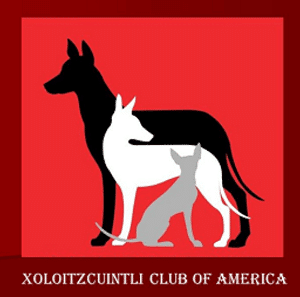
Founded in 1986, the Xoloitzcuintli Club of America is the AKC-recognized official parent club.

Explore the ancient origins of the Xoloitzcuintli, Mexico’s sacred hairless dog, revered for its loyalty, healing, and mystical powers.

Learn to evaluate the Xoloitzcuintli: a primitive breed of balance, moderation, and versatility, with rich cultural history.
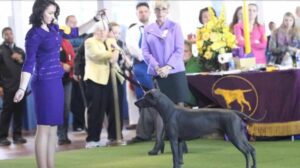
Meet the unique Xoloitzcuintli breed, through the eyes of devoted breeders and handlers, focused on improving and celebrating its uniqueness.
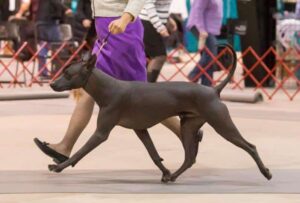
Interview with Non-Sporting Group Breeder Teresa M Vilá – Our kennel name is Ahuilaca, which means “playful and mischievous” in the Nahuatl
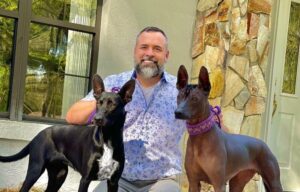
Breeder Interview with Richard Yenchesky by Allan Reznik – I grew up in Wisconsin and I attended my first dog show when I was 15. I can still
The best way to ensure a long and happy relationship with a purebred dog is to purchase one from a responsible breeder. Not sure where to begin?
Contact the National Parent Club’s Breeder Referral Program, which is listed on the AKC Breeder Referral Contacts page.
